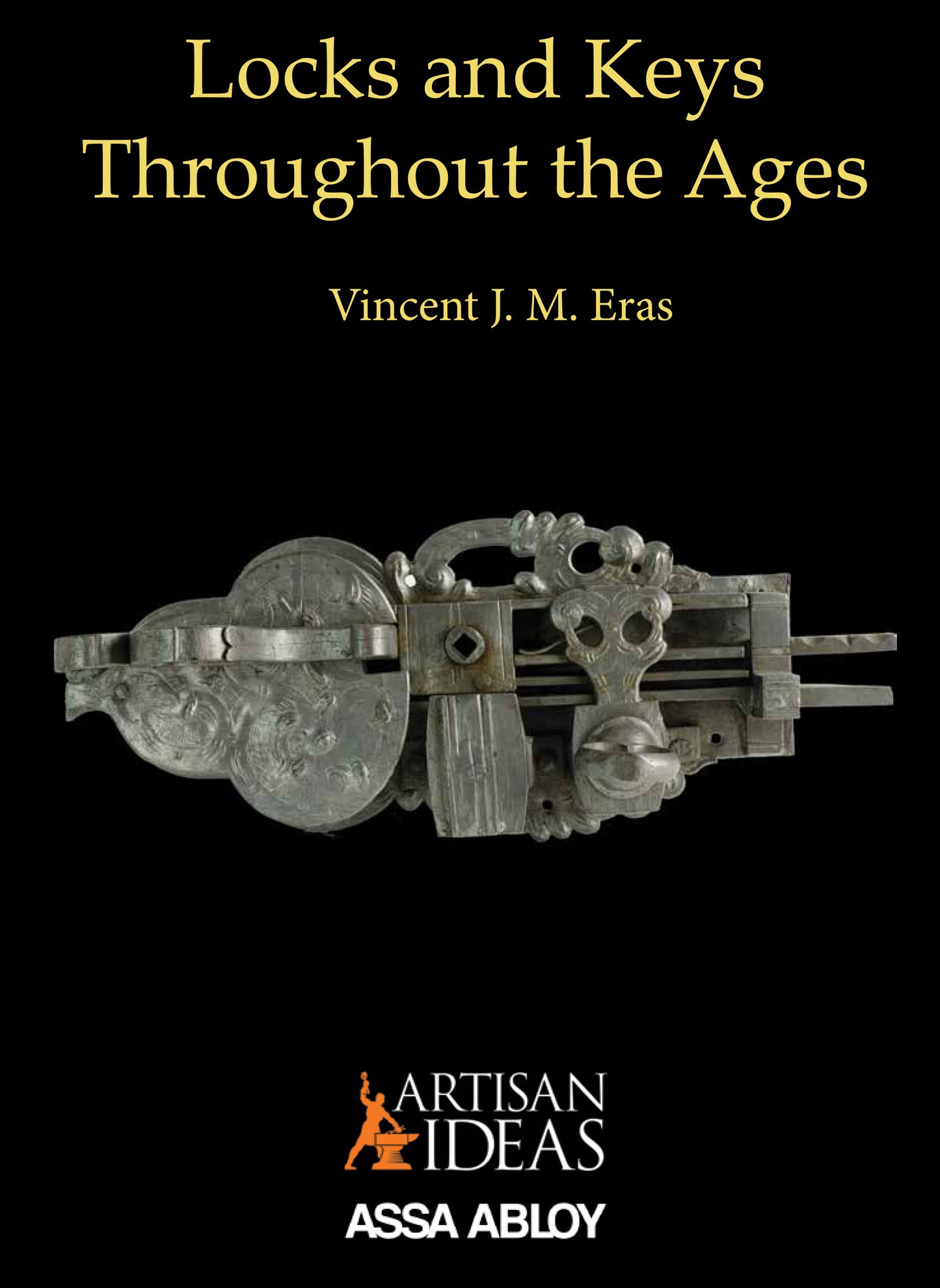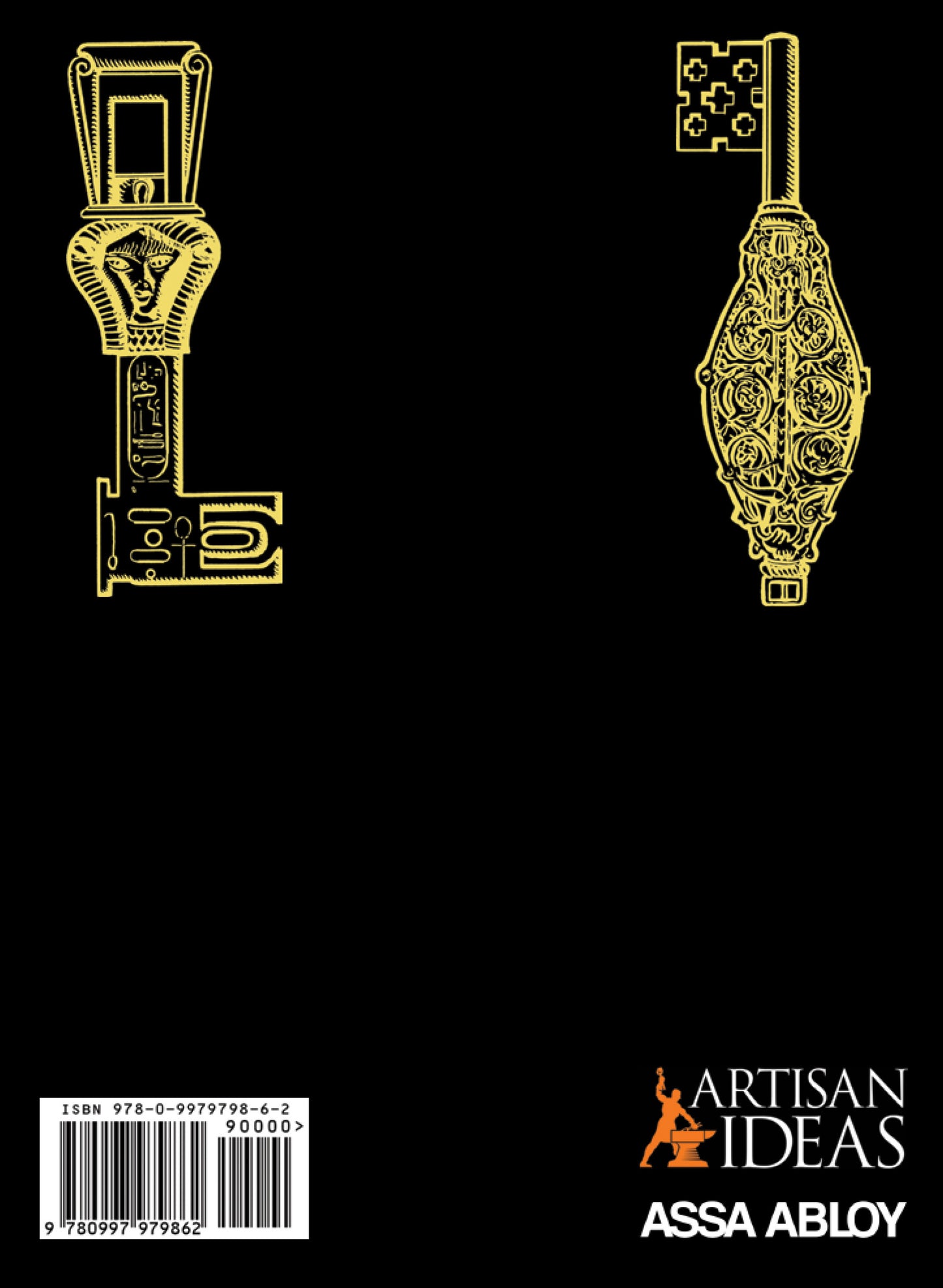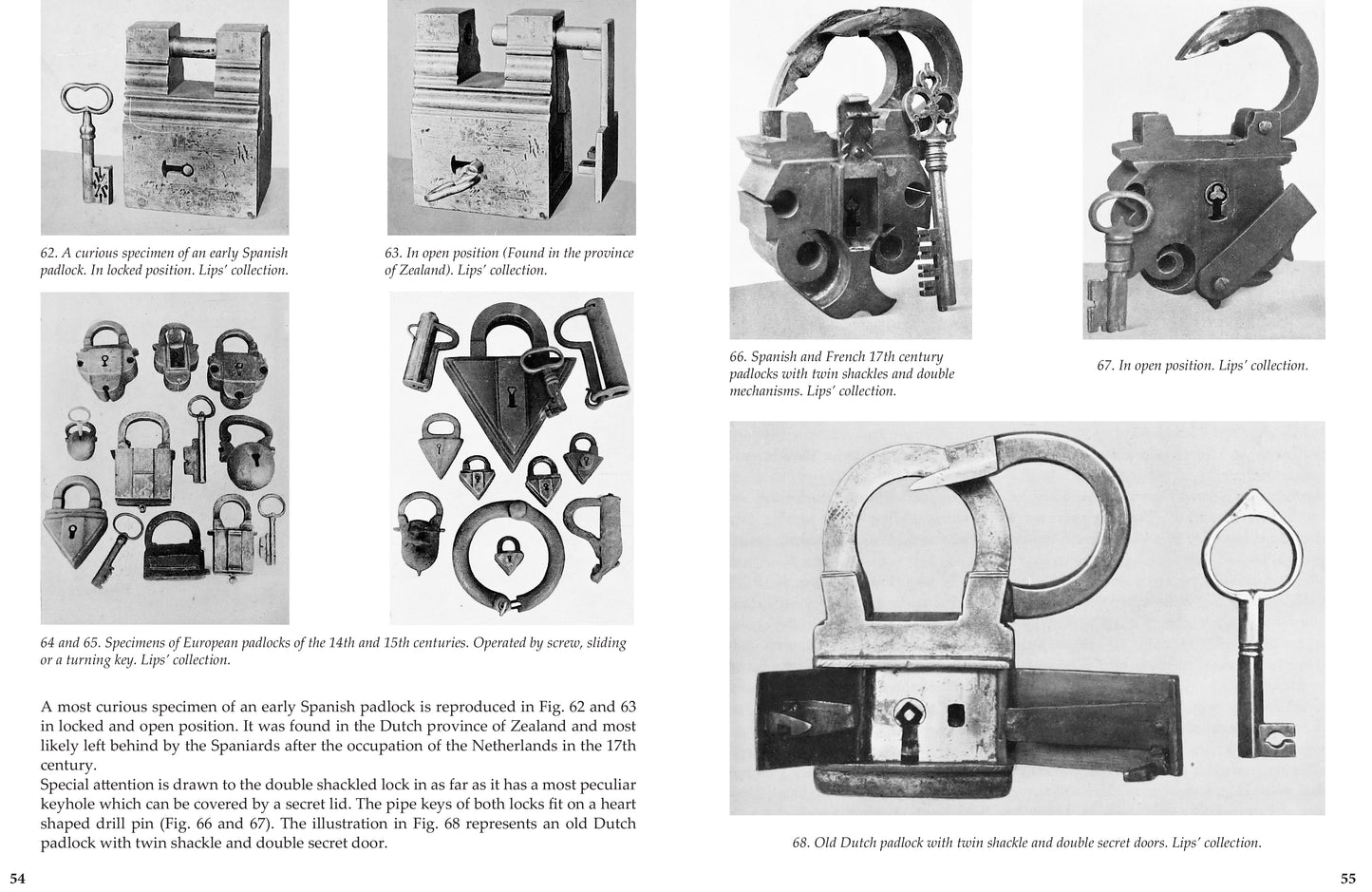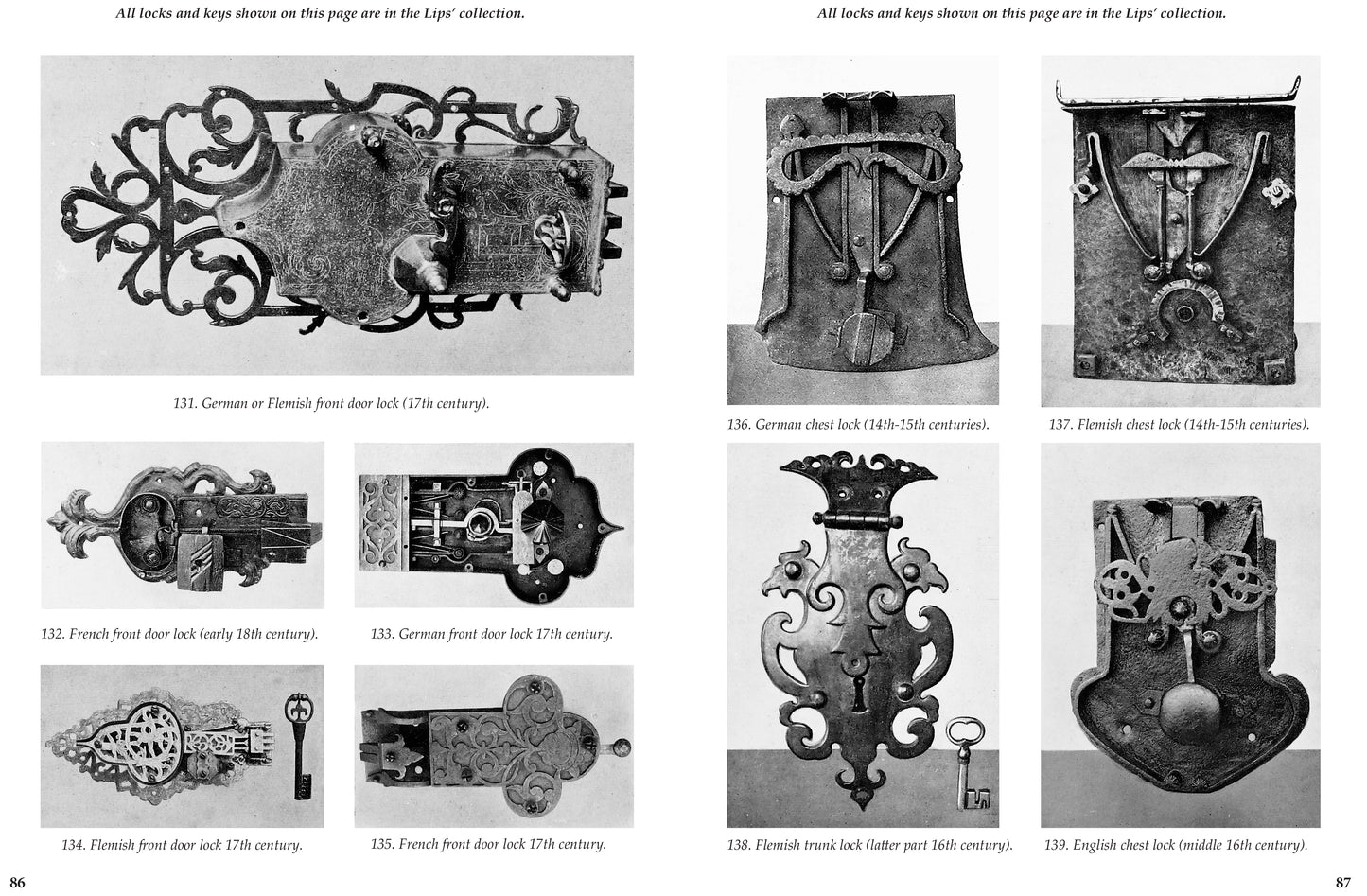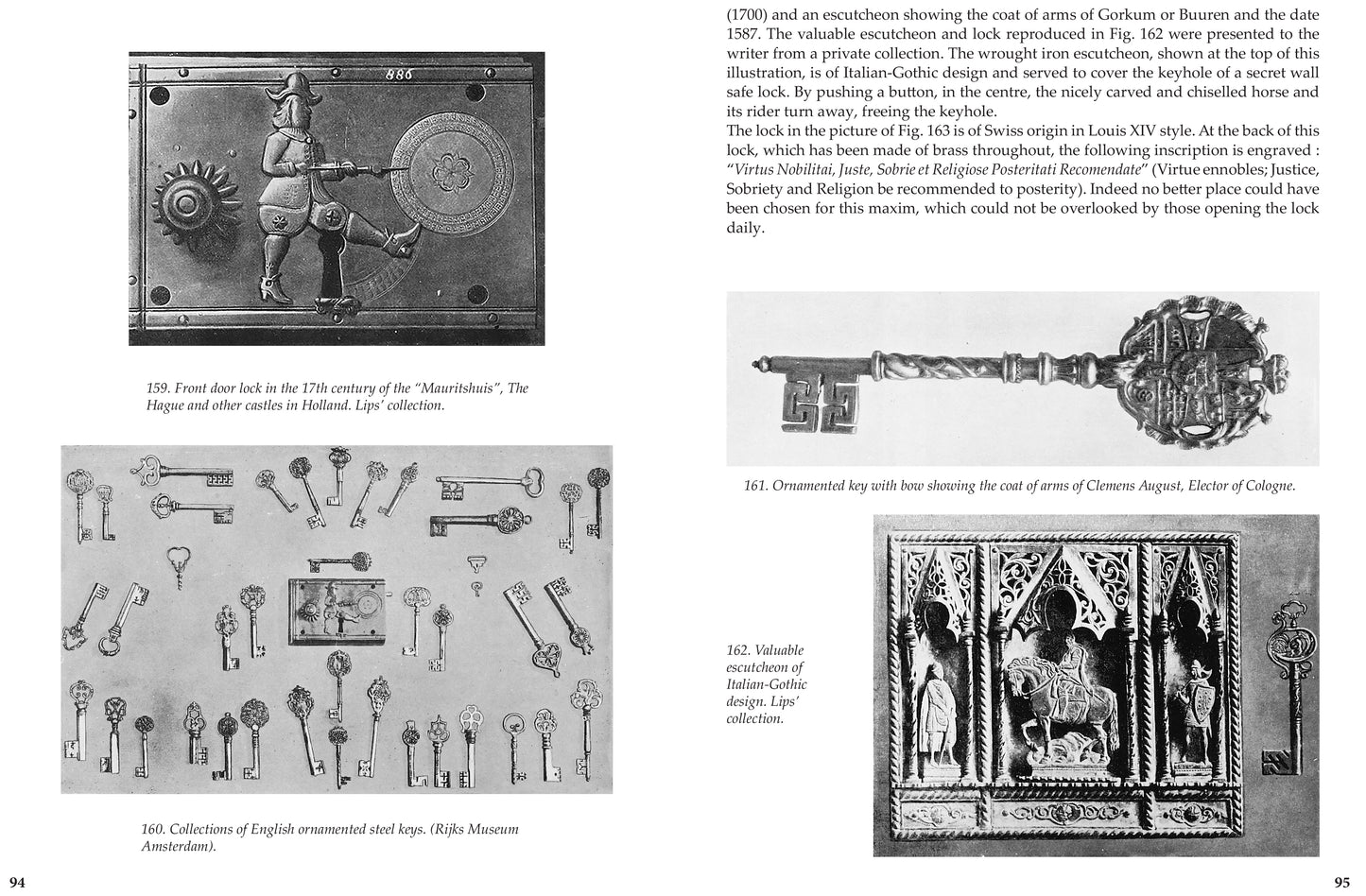Locks and Keys throughout the Ages
Locks and Keys throughout the Ages
Couldn't load pickup availability
View full details
Locks and Keys throughout the Ages is widely considered the best book ever written on the history of locks. It is illustrated throughout with photos from the extensive Lips’ Collection. It was written in 1957 by Vincent J.M. Eras, the director of one of the most respected and important lock manufacturing companies in the world at that time - the Lips’ Safe and Lock Manufacturing Company (now part of the Assa Abloy Group, along with Yale, Chubb, and many others).
This is a high-quality hardcover reprint of the 1957 edition of the book, done by special arrangement with ASSA ABLOY. The typeface has been completely re-done and the photographs have been corrected using the latest digital correction technology. The quality of the photos is equal to and, in many cases, better than the original 1957 edition.
The author was not only a master locksmith who developed several important patents but he was also an avid collector and was passionate about the history and development of locking mechanisms. His extensive knowledge of the field comes across on every page. In fact, Eras had been in the lock manufacturing business for 58 years before he wrote this book. In the preface he states:
“I consider it a gratifying task to place on record my experiences and through this book save them from oblivion. At the same time an excellent opportunity is presented to show the reader my collection of antique and modern locks – the tangible result of more than 50 years travelling, searching and study in many countries”.
In over 280 black-and-white photos and drawings Vincent Eras brings us on a grand tour of the development of locks from pre-historic to modern times and he also explains to us, in words and illustrations, how their mechanisms work.
Artisan Ideas is very glad to be able to make this exceptional book available to the public again.
Review text
"I am asked many lock questions in the course of a year. The most common one is: ‘where can I learn more about locks and keys?’. This book is what I recommend to collectors to go to first. I personally feel all lock and key collectors should have this book. It contains a mixture of European and American locks and keys across time. It includes lock mechanisms too. This is a quality book in every way; an impressive work”
Review text
"There are less than a dozen good informative books on locks and keys in the world. Many are long out of print. Luckily this is one of the best and is now back in print after a 45 year absence. If you have an interest in locksmithing, locks and keys or physical security history you should get your copy now.
The images in this new edition have all been digitally enhanced and most have been printed larger than in the original edition making it easier to see details in the images. There was a time when locksmithing was more about the high art of beautiful design and decoration than security. Artisans in Munich and Paris tried to outdo each other to be known as the finest lock makers without advancing the functionality of locks. This remained the same until the late 1700's when it became popular sport for locksmiths to make new designs and challange all commers (crooks and locksmiths alike) to pick their locks. Lock technology leapt forward rapidly until the modern time lock was invented.
Locks and Keys Throughout the Ages follows this history of locks from the simplest wooden devices until modern combination and time locks. Locks and Keys Throughout the Ages includes photos of some of the rarest early locks found in any collection through photos and diagrams of modern vaults. Locks of every kind from every age (up to 1957) are represented. The book includes many diagrams of lock and key types and use. The history of locks and keys is well written in this volume and is the source of many later histories of locks and keys.
The author, Vincent J.M. Eras was a certified Master Locksmith working for the world enowned LIPS lock company (now ASSA ABLOY). He had unequaled access to the Lips lock collection as well as other private and European museum collections to research and illustrate this book.
